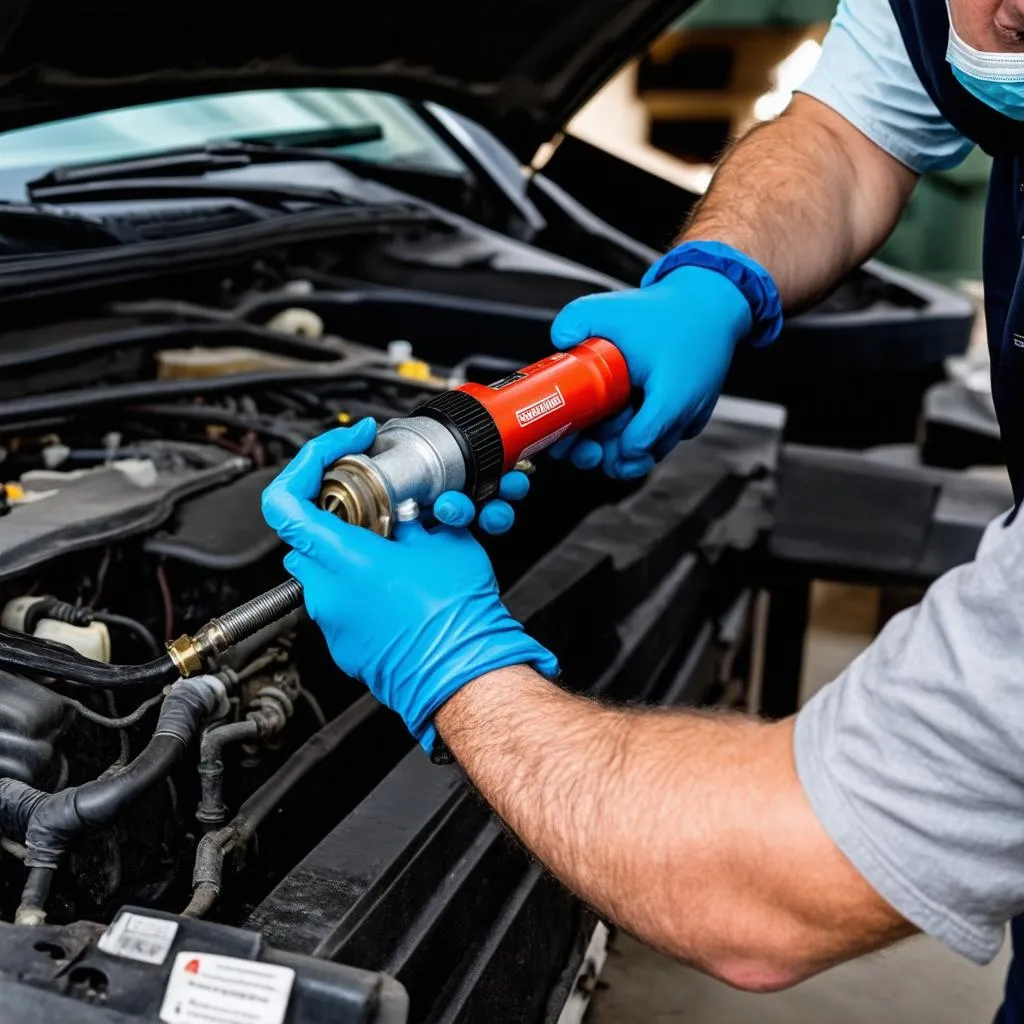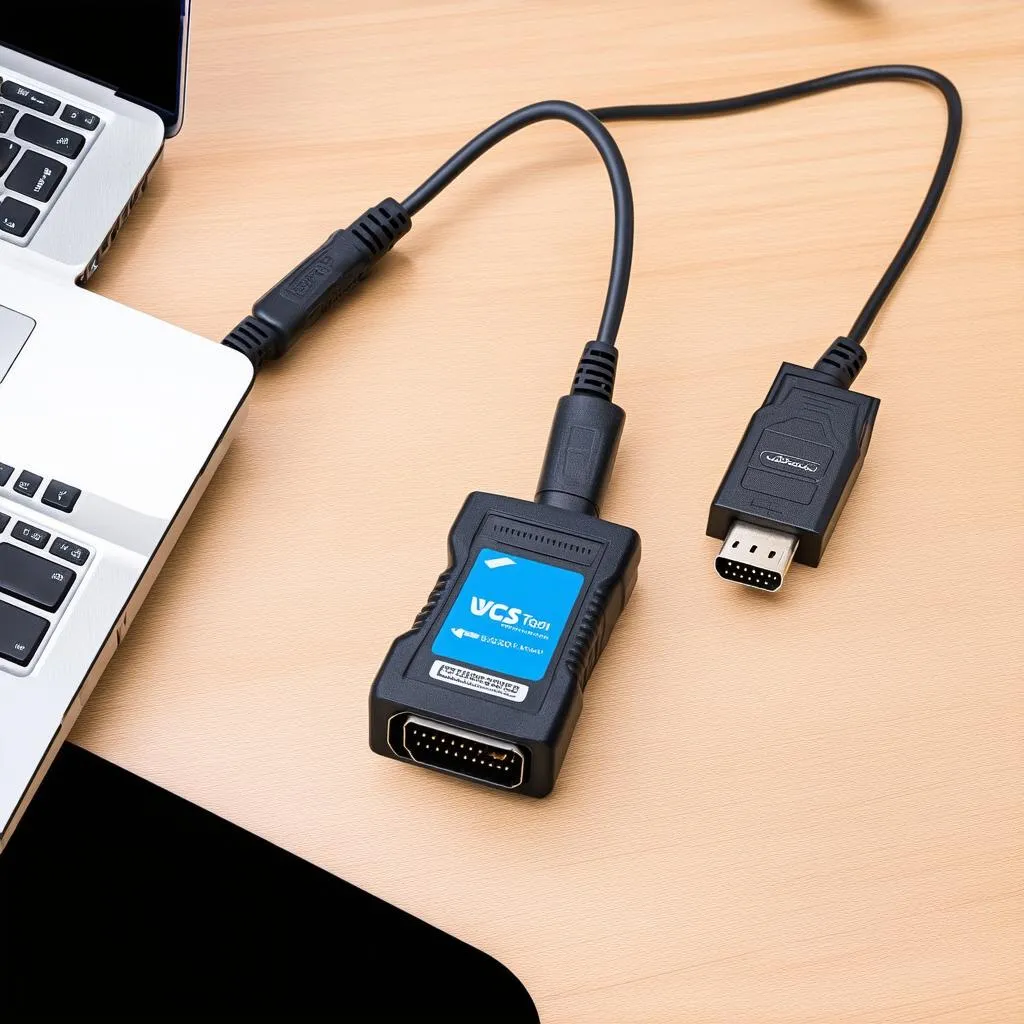EGR Test with VCDS: A Comprehensive Guide for European Car Owners
Have you ever wondered how to diagnose your car’s emissions system? Or maybe you’re facing a check engine light and suspect the EGR valve might be the culprit. Well, you’re not alone! Many car owners encounter issues with their EGR valve, and diagnosing it can feel like navigating a labyrinth of codes and technical jargon. But fear not, because today we’re going to unlock the secrets of EGR testing with VCDS, a powerful diagnostic tool that can help you understand the health of your emissions system.
Why Understanding EGR Test with VCDS is Crucial
The EGR valve is a critical component of your car’s emissions system, playing a crucial role in reducing harmful nitrogen oxide (NOx) emissions. Think of it as a gatekeeper for exhaust gases, regulating how much exhaust gas is recycled back into the combustion chamber. But like any gatekeeper, it can sometimes malfunction, leading to a variety of problems. This is where VCDS comes in, empowering you to identify and address these issues before they escalate.
Imagine a seasoned mechanic named John, who’s been working on European cars for decades. John knows that when a car starts running rough or the check engine light comes on, the EGR valve is often the culprit. He uses his VCDS tool to delve into the car’s inner workings, analyzing real-time data, and identifying potential problems with the EGR valve. Armed with this knowledge, John can then determine the best course of action, whether it’s cleaning the EGR valve, replacing it, or addressing other underlying issues.
What is EGR Test with VCDS?
EGR testing with VCDS involves using the VCDS diagnostic tool to analyze your car’s emissions system and evaluate the performance of the EGR valve. It’s like conducting a thorough health check on this critical component.
-
How it works: The VCDS tool connects to your car’s onboard diagnostic port (OBDII port) and allows you to access various data streams. By analyzing these data streams, you can gain valuable insights into the EGR valve’s operation, including its duty cycle, position, and flow rate.
-
Why is it important? Regular EGR testing with VCDS is essential for:
- Early detection of issues: Identify potential problems before they escalate into major repairs.
- Troubleshooting check engine lights: pinpoint the source of check engine light related to the EGR valve.
- Maintaining optimal performance: Ensure your car runs smoothly and efficiently by monitoring the EGR valve’s health.
The Benefits of Understanding EGR Testing with VCDS
Let’s face it, car repairs can be expensive. But understanding how to test your EGR valve with VCDS can help you save money in the long run. By catching problems early, you can often address them with simple solutions, such as cleaning the EGR valve or replacing a faulty sensor.
Think of it as a preventative measure, akin to getting regular checkups for your own health. In the same way that early detection can prevent serious health issues, timely EGR testing can help avoid costly repairs.
-
Some of the key benefits of EGR testing with VCDS include:
- Reduce repair costs: Catch problems early and avoid expensive repairs.
- Prevent premature engine wear: A faulty EGR valve can cause engine damage, so early detection is crucial.
- Improved fuel economy: A properly functioning EGR valve contributes to optimal fuel efficiency.
- Minimize emissions: Reduce harmful emissions and contribute to a cleaner environment.
How to Perform an EGR Test with VCDS
Performing an EGR test with VCDS is surprisingly straightforward. While we don’t advocate for DIY repairs without the necessary knowledge and experience, understanding the process can help you communicate effectively with your mechanic.
Step 1: Connect VCDS to your car. Connect the VCDS tool to your car’s OBDII port.
Step 2: Select the correct module. Navigate through the VCDS interface to select the engine module.
Step 3: Access EGR valve data. Look for the EGR valve-related data streams, which may include:
* **EGR duty cycle:** This indicates how much exhaust gas is being recirculated.
* **EGR valve position:** This shows the position of the EGR valve, either open or closed.
* **EGR flow rate:** This measures the amount of exhaust gas flowing through the EGR valve.Step 4: Analyze the data. Compare the data to the manufacturer’s specifications and look for any abnormalities.
Step 5: Interpret the results. Based on the data, determine if the EGR valve is functioning properly or if there are any issues that need to be addressed.
Common EGR Test Results & Troubleshooting
Now let’s talk about some common EGR test results and troubleshooting steps:
EGR Valve Stuck Open
- Symptoms: Reduced engine power, rough idle, black smoke from the exhaust.
- Troubleshooting: Check for any mechanical blockages or debris that may be preventing the EGR valve from closing properly.
EGR Valve Stuck Closed
- Symptoms: Increased emissions, check engine light, potential performance issues.
- Troubleshooting: Ensure the EGR valve is receiving proper electrical signals and that there are no vacuum leaks.
EGR Valve Flow Rate Issue
- Symptoms: Check engine light, inconsistent performance.
- Troubleshooting: Inspect the EGR valve for any signs of wear, tear, or carbon buildup.
EGR Sensor Malfunction
- Symptoms: Check engine light, erratic performance.
- Troubleshooting: Test the EGR sensor with a multimeter and replace it if necessary.
The Importance of Using a Reputable Diagnostic Tool
While there are many diagnostic tools available on the market, it’s essential to choose a reputable tool like VCDS. This is where the “feng shui” of technology comes into play. Just as proper feng shui creates harmony and balance in a space, using a high-quality diagnostic tool like VCDS ensures a balanced and reliable diagnosis for your car.
-
Benefits of using VCDS:
- Accuracy: VCDS is known for its accuracy and ability to provide detailed information about your car’s systems.
- User-friendliness: The user interface is intuitive and easy to navigate.
- Extensive coverage: VCDS supports a wide range of European car models.
- Community support: A large online community provides support and guidance for users.
FAQs about EGR Testing with VCDS
-
Q: Can I perform an EGR test myself?
- A: While you can learn the basics of EGR testing with VCDS, it’s generally best to consult a professional mechanic for repairs.
-
Q: How often should I perform an EGR test?
- A: A good rule of thumb is to test your EGR valve every 30,000 miles or every two years, whichever comes first.
-
Q: What if I find an issue with my EGR valve?
- A: Consult a qualified mechanic for repairs. They can diagnose the problem and recommend the best course of action.
Conclusion
Understanding EGR testing with VCDS is essential for any European car owner who wants to keep their vehicle running smoothly and efficiently. With its powerful diagnostic capabilities, VCDS empowers you to proactively address potential issues, minimize repair costs, and optimize your car’s performance.
Remember, just like a well-balanced home promotes positive energy flow, a well-maintained car promotes a smooth and enjoyable driving experience. By taking the time to understand EGR testing with VCDS, you’re investing in the long-term health and well-being of your car.
Don’t hesitate to reach out to us at cardiagxpert.com if you have any questions or need assistance with diagnosing your EGR valve. We’re always here to help!
 VCDS EGR Test
VCDS EGR Test
 EGR Valve Cleaning
EGR Valve Cleaning
 VCDS Tool for European Cars
VCDS Tool for European Cars
